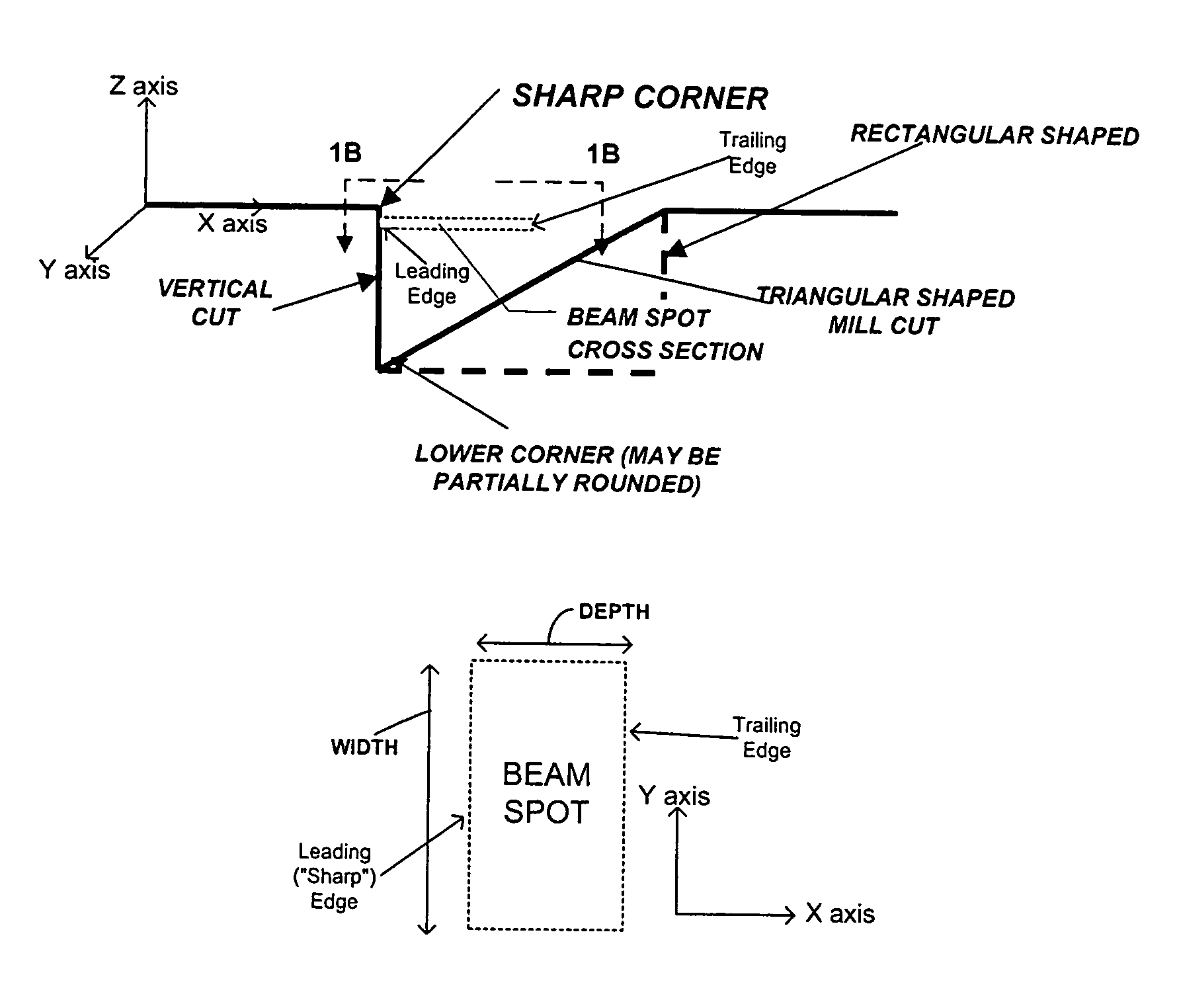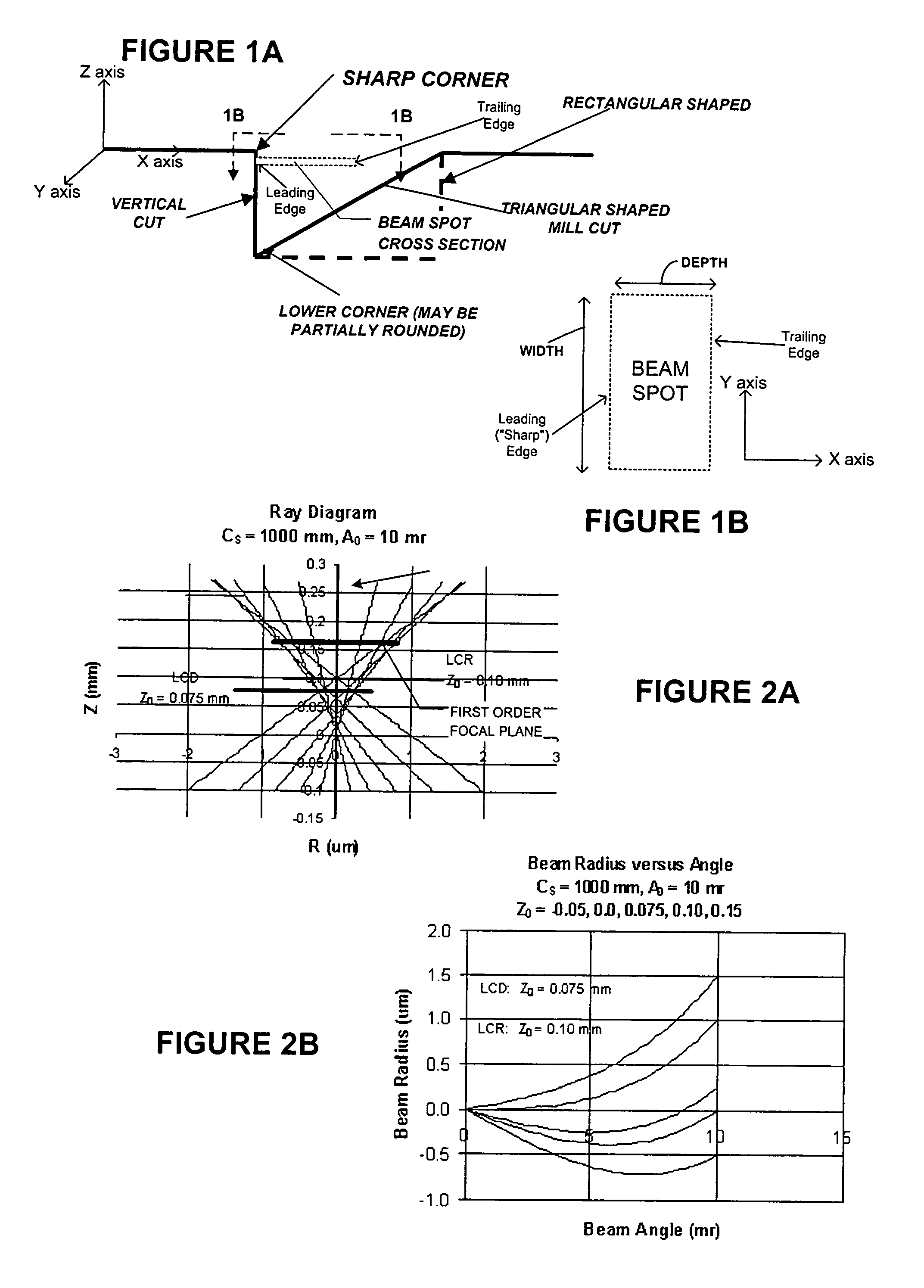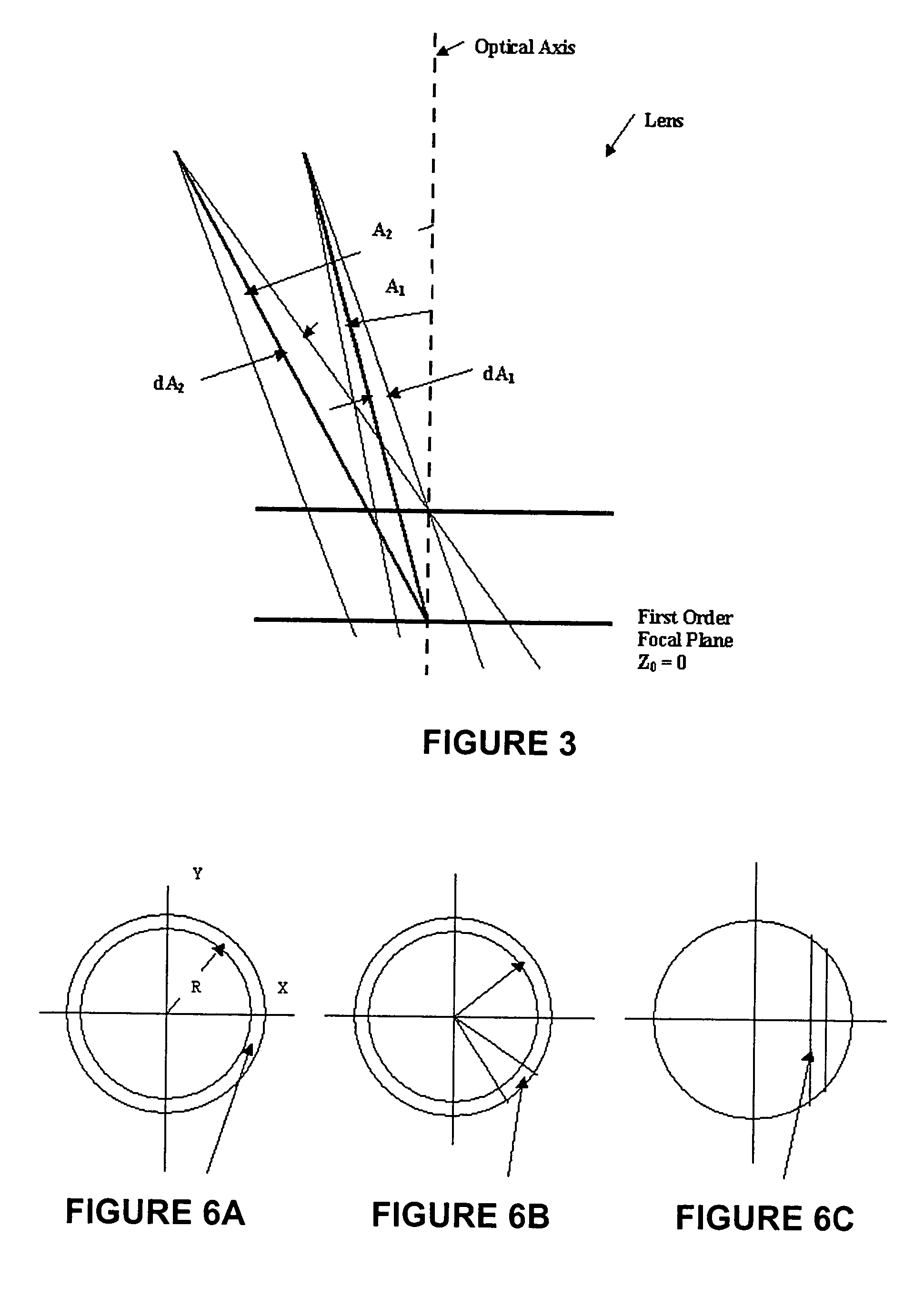Angular aperture shaped beam system and method
a beam system and beam technology, applied in the field of shaped beams, can solve the problems of increasing the difficulty of achieving beams with sufficient current, increasing the difficulty of achieving single beams that can meet all of these criteria, and excessive time normally needed to mill away all of the material, so as to achieve the effect of more beam curren
- Summary
- Abstract
- Description
- Claims
- Application Information
AI Technical Summary
Benefits of technology
Problems solved by technology
Method used
Image
Examples
Embodiment Construction
Introduction
[0029]With reference to FIGS. 1A and 1B, microstructure milling tasks such as cross-sectional cutting for imaging and metallurgical applications require beams with at least one sharp edge for cutting away a slice that leaves a straight, “clean” cross-sectional surface. FIGS. 1A and 1B show a target sample region where such a cross-sectional slice (block or triangular in the depicted figure) is to be cut away using a rectangular shaped beam spot. FIG. 1A is a side view of the beam spot and milling region, while FIG. 1B is a top view of the beam spot taken along lines 1B—1B of FIG. 1A. These figures indicate nomenclature that are used consistently throughout this disclosure.
[0030]The depicted beam spot has a leading edge and a trailing edge. The “leading edge” refers to a straight, sharp edge of the spot that can be used to mill away sharp, vertical surface faces. Conversely, the “trailing edge,” which is on the other side of the spot from the leading edge, usually can hav...
PUM
 Login to View More
Login to View More Abstract
Description
Claims
Application Information
 Login to View More
Login to View More - R&D
- Intellectual Property
- Life Sciences
- Materials
- Tech Scout
- Unparalleled Data Quality
- Higher Quality Content
- 60% Fewer Hallucinations
Browse by: Latest US Patents, China's latest patents, Technical Efficacy Thesaurus, Application Domain, Technology Topic, Popular Technical Reports.
© 2025 PatSnap. All rights reserved.Legal|Privacy policy|Modern Slavery Act Transparency Statement|Sitemap|About US| Contact US: help@patsnap.com



